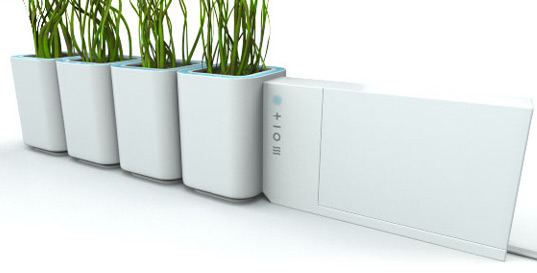MetaboliCity
MetaboliCity is a vision of a city that metabolizes its resources and waste to supply its inhabitants with all the nourishment they need and more. London based studio Loop.pH started MetaboliCity in October 2009 as a design seeding process that included the participation of over 100 volunteers from eco-architects and hydroponic experts to chefs and residents of East London housing estates, working together to co-design a diverse portfolio of solutions for growing food in the city. MetaboliCity is now a growing network of small-scale, distributed urban vegetation experiments that develop solutions to integrate both traditional and hi-tech agricultural techniques into the fabric of the built environment. Be it soilless, solar powered window farms, vertical green cladding that clings to facades or organically grown vegetables climbing up street lamps, innovative solutions emerged from multidisciplinary teams collaborating.
Note: I think this is the group we want to be most involved with. PLSS could be pitched as a "grow lab"
Window Farms
What are Window Farms??
Window Farms are vertical, hydroponic, modular, low-energy, high-yield edible window gardens built using low-impact or recycled local materials.
Goal 1
to start a Windowfarming craze in New York City and other dense urban areas, helping people grow some of their food year-round in their apartment windows.
Goal 2
give ordinary folks a means to collaborate on research and development of these vertical hydroponic food-growing curtains through the community site at our.windowfarms.org The Windowfarms Project operates in what seems a small niche, but we hope it might be what Buckminster Fuller would call a "trim tab," a small part that turns giant ships by being particularly well placed. Growing some of our own food is a simple pleasure that can make a big difference in our relationship with nature. As we choose nutrients to feed plants we hope to eat in turn, we gain experience with a nearly-lost fundamental human art, get a microcosmic view of the food system, develop a stake in the conversation, and come up with new ideas for how to take care of ourselves and our planet in troubled times. Let's make this experience possible for anyone!
Note: this is another group I think we should be involved with, though our project seems to fall outside of their scope.
The Urb Garde
Xavier Calluaud illustrates the Urb Garden’s simple step-by-step process. Scraps of food are deposited into the worm farm, creating nutritious fertilizer. Water is added and the liquid fertilizer is delivered to the plants via a drip system. The water drains down the tank and then is pumped back up to be used with the next batch of fertilizer. As the plants grow, modular bins are easi ly removed for harvesting and re-potting.
Urb Garden at Inhabitat Xavier Calluaud (not much information)
Herbi
Michael Kritzer’s Herbi is no exception. The hydroponic countertop herb pot is sleek, modern and elegant. But don’t be fooled — Herbi’s not just all good looks and no brain; this little gadget issmart. Even if you are one of those people who can’t keep a stick of bamboo alive, Herbi will grow vibrant herbs for you year-round by telling you exactly what it needs and when. When Herbi needs PH adjustments, nutrients or water, it communicates directly by illuminating a blue LED behind one of four corresponding icons, meaning you don’t have to be a plant-whisperer to have a healthy garden. You can connect up to six little mod units (called “plant silos”) for an herbal medley in your kitchen.
High Performance Hydroponics
I picked up a copy of Urban Garden Magazine at the hydroponics shop on Duluth and de Bullion. Not unexpectedly there is a culture of hydroponic growers who are pushing plants for super high yields. The issue of the magazine I got has an article about sensor-based regulation of nutrients. Perhaps we could push in this direction toward high performance life support.
More to come.



